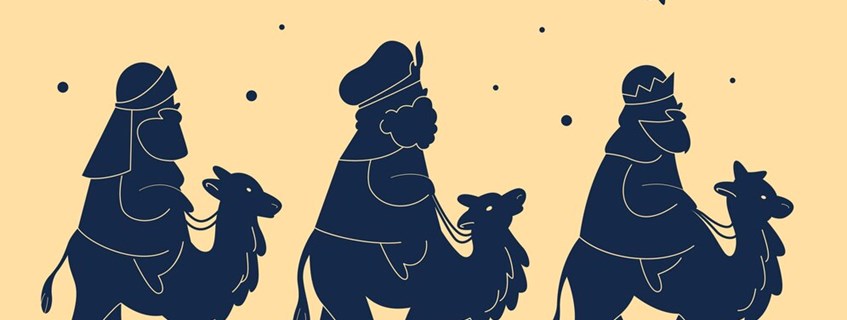
"La Cabalgata de Reyes": The Parade of the Three Kings in Spain
La Cabalgata de Reyes is a magical event that awaits Spaniards every year. This parade of the Three Kings transforms the streets of Spanish cities into a meeting place of magic and joy. La Cabalgata de Reyes is not just a festive procession, it is an ancient tradition that captures the hearts of all ages.
The Feast of the Three Kings, or "Día de los Reyes Magos", in Spain has deep historical roots and a special significance. This day, celebrated on January 6, concludes the Christmas season and is the culmination of the holiday in the country. The history of the holiday has biblical roots associated with the visit of the Magi to the baby Jesus, carrying gifts as a sign of worship. La Cabalgata de Reyes has become a vivid reflection of this history, bringing together religious traditions and cultural heritage.

La Cabalgata de Reyes: The Parade of the Three Kings
The start of the parade: how and when does La Cabalgata de Reyes begin?
La Cabalgata de Reyes usually begins on the evening of January 5, when the cities of the Spanish country come alive with anticipation of magic. Festive preparations begin in the morning, and the parade itself starts in the evening, filling the streets of cities with bright light and music.
Parade participants: three kings and other characters
The main members of La Cabalgata de Reyes are the Los Reyes Magos, or Three Kings, representing Melchior, Gaspar and Belshazzar. They ride in festively decorated strollers or camels carrying gifts for children. Together with the Three Kings, other characters march, creating a carnival atmosphere: angels, clowns, fairies, and others.
The route of the procession: how the parade goes through the streets of the cities
The route of the parade is carefully planned to cover as many streets and districts of the city as possible. The procession passes through the main streets, accompanied by music, dancing and bright lights. Each city brings its own characteristics to the festive procession, making La Cabalgata de Reyes unique to every corner of Spain.
How Spaniards Prepare for the Celebration: Traditional Customs
Preparations for La Cabalgata de Reyes begin in advance. Spaniards decorate their homes using traditional Christmas decorations. The children leave their shoes on the windows, expecting the Three Kings to fill them with gifts and sweets.
The Role of the Three Kings (Los Reyes Magos) in Spanish Culture
The Three Kings play a key role in Spanish culture in the run-up to Three Kings Day. Spaniards believe that each king carries his own symbolic gifts: gold, frankincense and myrrh. These gifts are considered symbols of well-being, wealth, and protection.
The Impact of the Parade on Socio-Cultural Life in Spain
La Cabalgata de Reyes is not just a parade, it is an event that connects people of different ages and social groups. The holiday carries the spirit of joy, magic and hope. The procession becomes a time to reunite families, meet friends and create fond memories. The influence of this holiday on the socio-cultural life of Spain is enormous, strengthening traditions and forming a special flavor of Spanish society.

Completion
The symbolism of La Cabalgata de Reyes goes deep into the cultural roots of Spain, giving this parade a special meaning in the hearts of Spaniards. The three Kings who brought their gifts to the baby Jesus became symbols of kindness, love and solidarity. La Cabalgata de Reyes carries a message of hope and faith in miracles, bringing people together in a common festive delight.
In January in Spain, when the Christmas holidays are over, the air is filled not only with a farewell mood, but also with a sense of a new beginning. La Cabalgata de Reyes, acting as the final chord, leaves a mark on the social atmosphere. This festive parade not only ends the Christmas season, but also inspires Spaniards to preserve their magic and attention to loved ones throughout the year.
La Cabalgata de Reyes has become part of the cultural calendar, creating a warm and friendly atmosphere in Spanish cities. The parade stimulates interaction within communities, strengthening ties between generations and creating a special touch of delight in the gray winter everyday life. This tradition embodies not only the cultural richness of Spain, but also its ability to gather people around the common values of love, warmth and mutual understanding.

